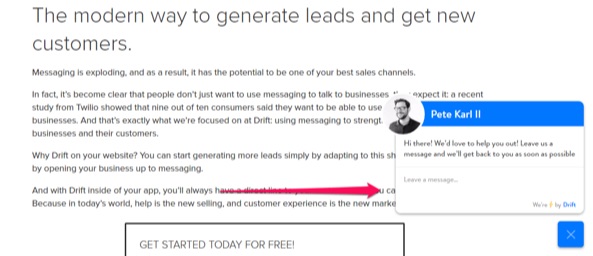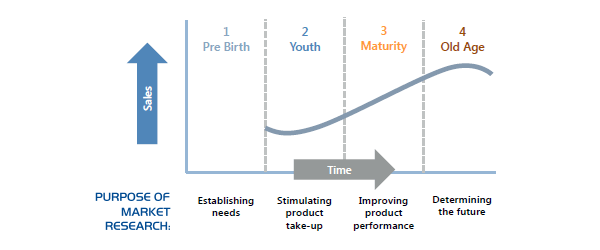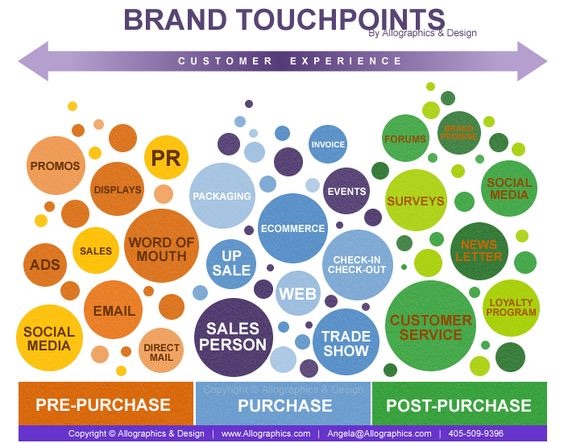Optimizing the customer experience is a great way to get new customers. It’s also one of the best ways of fostering customer loyalty.
According to Teradata, only 41% of marketing executives are using customer engagement data to inform their marketing strategy.
Despite this, marketers and other organizational leaders alike are neglecting the customer before and after the sale. The biggest barrier to even beginning is usually the lack of a deep understanding of the customer in the first place.
Having a comprehensive understanding of your customers is key to achieving core business goals. Whether you’re trying to build (or optimize) the customer experience, creating more engaging content or increasing sales. Knowing your customers better than they do is key.
In this article, I’m going to outline 5 techniques you can implement to understand your customers better. We’ll look at both qualitative and quantitative data, as well as at the tools and mindsets you need to equip to get started successfully.
1. Apply Intelligent Customer Engagement
An optimized customer experience is valuable for revenue and retention. If you get it right, it can be a source of customer insight.
Engaging with your customers in real-time has become more easily accessible thanks to new tools. Messenger is becoming an ever more popular customer service channel, while tools like Drift allow you to talk with your customers as they browse your website:

These channels are a means of collecting customer insight. Your proprietary data from interacting with your customers, regardless of the channel, can help you understand them better. Work with your customer service teams to look for patterns and react to the insight you generate.
On top of this, nothing beats customer development. Getting your customers on the phone on a regular basis can help you go deeper into their pains, needs and challenges.
This is exactly what Alex Turnbull, Founder of Groove does, in order to understand his customers more. He schedules regular calls so he can fully understand what they love or dislike about his product.
As a result, he’s helped improve his onboarding process, turned unhappy customers into happy customers and created more sophisticated buyer personas.
As you work to keep your customers engaged during the first stages of the customer journey, think of your budding relationship as a two-way street. Encourage customers to share their thoughts and opinions by including a customer satisfaction survey into your email drip.
SurveyGizmo suggests these three key principles to follow when designing a survey:
- Remove bias: Ask the customer for their opinion without projecting your own. Get their uninfluenced, impartial opinion. You want genuine insights, even if they’re negative. An example of this could be something as simple as “What do you think we could do better?”
- Be concrete: Use simple language that asks for feedback on a specific topic. For example, “How have you improved marketing effectiveness using our software?” will help to determine the value your customers are getting from you.
- Focus: Your surveys should address one area of the customer experience. The aim is to get insights that you can then act upon.
Keep these things in mind as you personalize your customer survey with questions pertaining to your brand and product.
2. Create More Robust Buyer Personas
Many marketers make the mistake of using generic demographics like age, profession, and location to develop their buyer personas. These data points simply don’t provide enough information to create messaging that resonates with your audience on an emotional level.
One way to dig deeper into customer preferences is to use the Acquisitions tab on Google Analytics to see which social media outlets, industry blogs and professional forums your site traffic comes from. Then, apply this information to your personas so you can find out where and when to reach them more effectively.
Additionally, acquiring keyword data is a helpful way to discover the terms and descriptions that certain buyer personas use to describe your services.
To segment customers based on keyword searches, for example, use Google Webmaster Tools to create a list of common keywords that drive people to your site. Then, group the keywords into overarching themes and assign to different personas based on the data you have available.
This video by Bryan Harris will help you find ways to get around “keyword not provided” and help you identify keywords people are using to get to your website.
To put this language into action, incorporate these keywords across your website copy, content marketing efforts, and other online interactions. Speaking the same language as your customers is a subtle way to make your current audience feel more welcomed.
3. Generate Data from Customer Analytics
From clicking on a link to reading through a web page, every customer action offers valuable insight into customer behavior.
To determine how customers interact with your website, you can try a user behavior tracking tool. Tools like Google Analytics and Inspectlet are great tools for gathering insights such as time on page and bounce rate. Inspectlet can even provide short videos of users on your page in real time.
Another obvious tool is Kissmetrics. Their platform tracks the behavior of each of your customers, allowing you to manage and gather insights on specific segments.
The behavioral data you collect should lead you to conclusions about what your audience doesn’t understand, what they do and don’t like, and how you can create a stronger website experience.
If people had trouble navigating to a certain sales page, for example, adjust the interface to allow for a more user-friendly experience.
If there’s one page people spend more time on than others, analyze that page’s content to see what’s retaining people’s attention. Most importantly, if there’s a page with a high bounce rate, try to see what’s making people leave.
4. Anticipate, Predict, and Plan for the Future
Creating a plan for future customer engagement is just as important as creating a plan for the present. This puts customer experience teams in the right frame of mind to respond to customers during stressful or challenging situations.
Predictive modeling software mines existing customer data to identify cyclical patterns and trends that can inform decision making. Two great tools are RapidMiner and Angoss’ customer analytics, both of which create realistic future models.
To see how predictive modeling informs customer strategy, imagine you work for a SaaS company that wants to adjust its product roadmap to anticipate customer needs.
Looking at historical behavioral data will show you which features customers have found most valuable over time, and which features they didn’t use. Understanding your most popular and most visited pages can also inform your content strategy, focusing on topics and formats that will best solve your audiences challenges.
Draw trends across the most commonly-used features to determine why your customers liked them. Additionally, looking at market trends and analysis will give you a good idea of what other companies in your space have already accomplished, so you can devise new features that explore these areas.
Julia Cupman of B2B International emphasis the importance of market research:
“Many companies turn to disciplined market research as a form of insurance, i.e. as a means of reducing business risk. The next section looks at how market research is used in product development – not only as insurance, but also as a tool to establish needs and to obtain intelligence on market potential.”

The above image shows how all stages of the product lifecycle benefits from market research. As you can see, continuous market research throughout the product roadmap naturally leads to more sales. The more you understand your market, the better product/market fit you have.
5. Traverse Your Customer’s Path
The only way to understand the unique and dynamic customer buying journey is to put yourself in your customer’s shoes.
This is made possible by an advanced technique called customer journey mapping — a method where companies create a detailed, graphical representation of the customer journey based on critical touch points — interactions between a customer and your brand before, during, or after purchase.
Let’s use Uber as an example to define touchpoints and see how they apply to customer journey mapping. Minor touch points include activities like downloading the app, or following the app on social media.
Major touch points, on the other hand, include things like requesting a ride, or completing driver training. Once touch points are defined, explore the circumstances affecting each touchpoint.
For example, a marketer at Uber might ask: what influenced the rider to download the app for the first time? Was it related to Uber’s customer referral program? Engage your internal team with these issues to get a well-rounded perspective and promote collaborative problem solving.
When you identify failed touchpoints, such as when a customer fails to use the Uber app they downloaded, establish a plan for contacting these customers.
You may want to create milestones, such as when an app user hasn’t logged into their account in three months, or when an avid customer suddenly stops using the product. It’s best if your customer experience team is able to call, write, or meet with customers directly to understand why they’re disengaged.
If you don’t have these resources, create an email marketing drip specifically focused on re-engaging your customers based on certain milestones.
Conclusion
Thanks to advanced analytics, behavioral recording tools, and stronger customer touchpoints, understanding customer behavior has gotten easier than ever.
The techniques outlined in this article are common practices meant to inform and inspire your customer engagement efforts, but they should always be catered to what’s right for your audience.
What are your favorite tools and strategies for increasing customer engagement? Share your experiences with us in the comments below.
About the Author: Brad is a Content Marketing Strategist at Pipedrive, a sales tool for small teams with big ambitions. Get access to their free email course Sales Pipeline Academy.


No comments:
Post a Comment